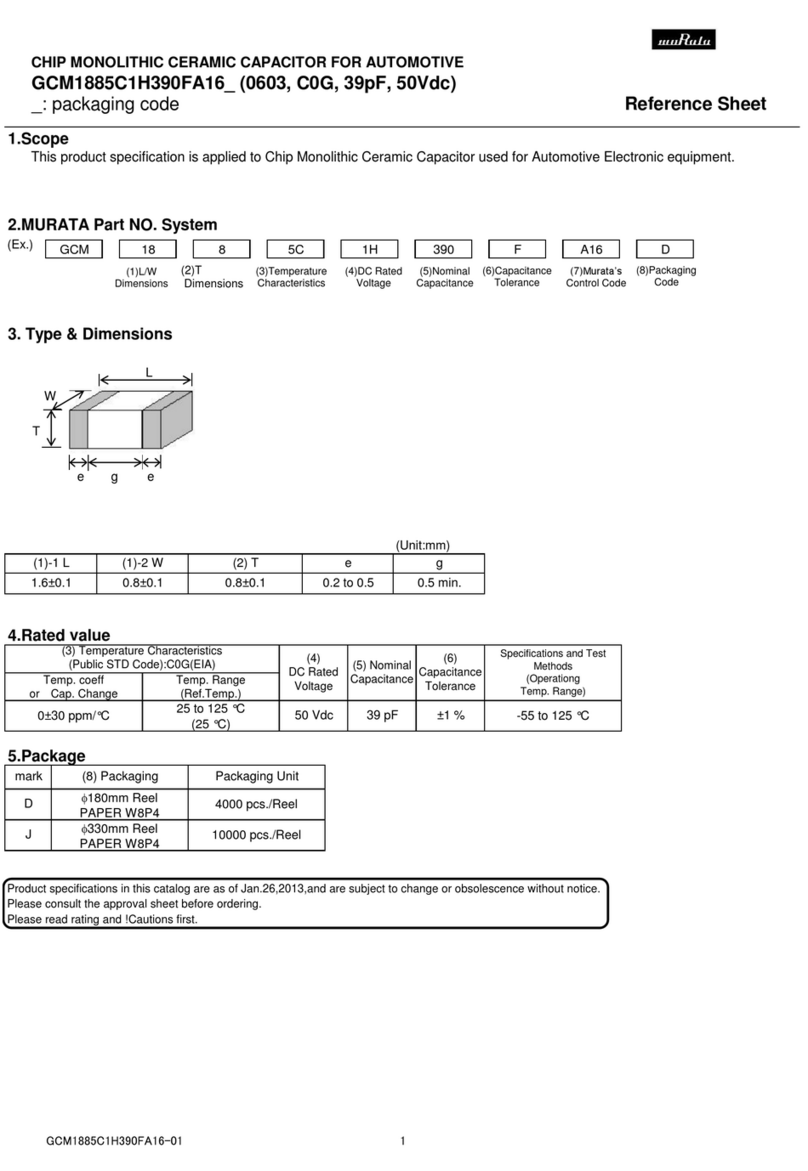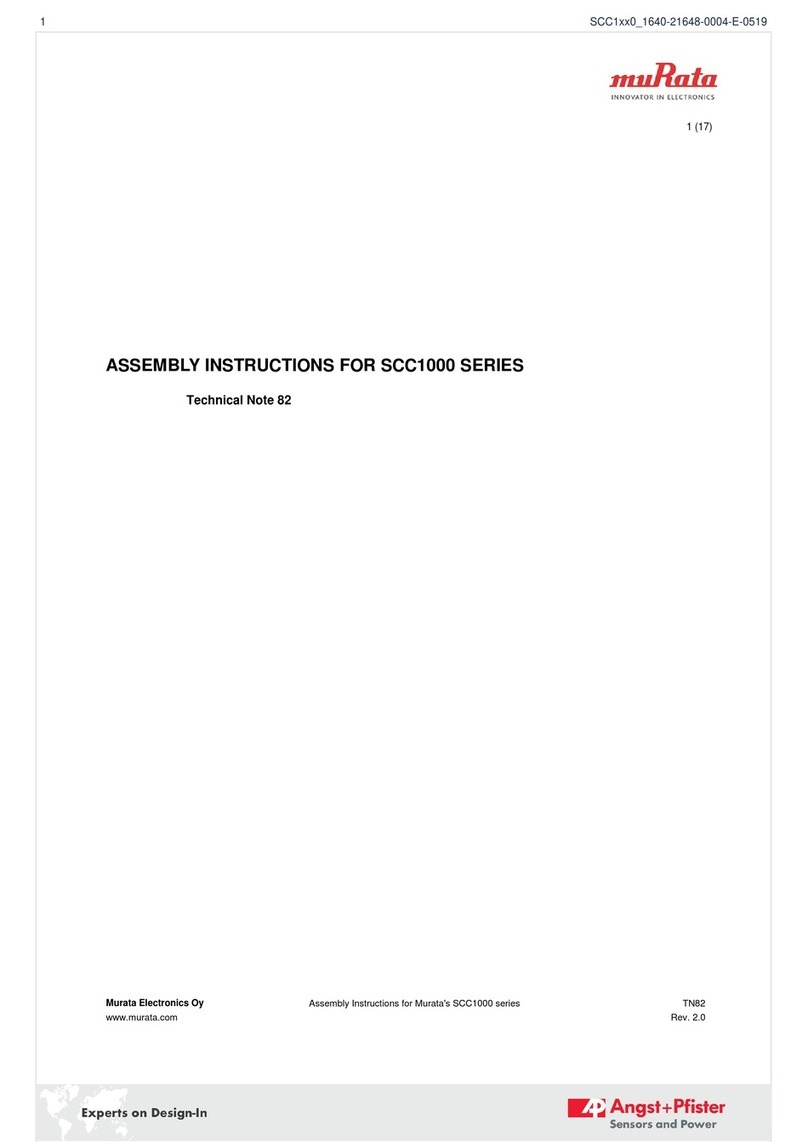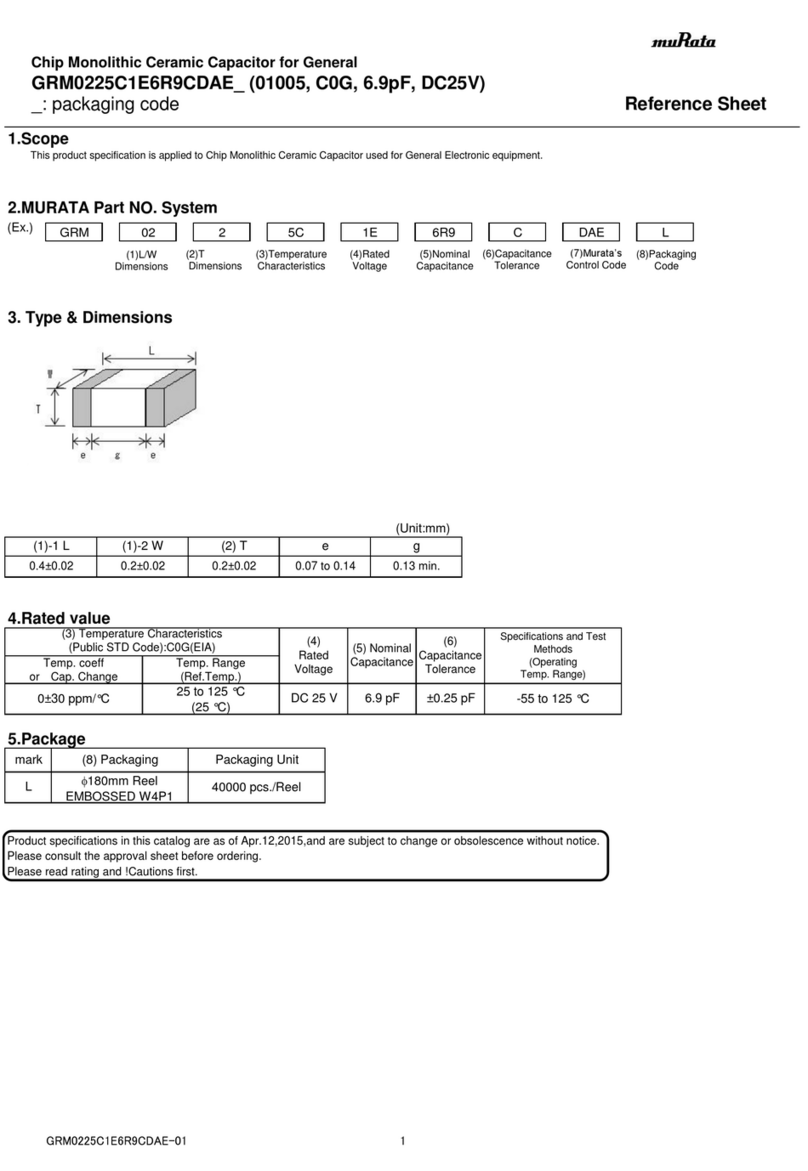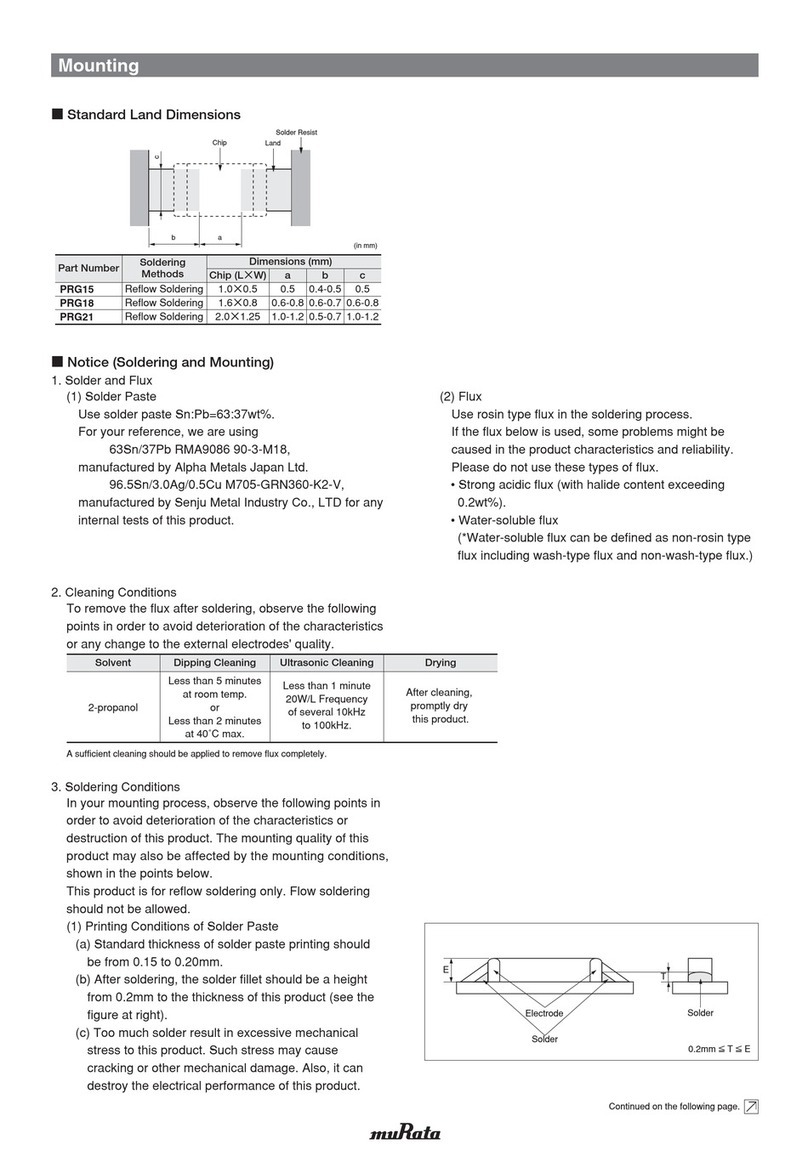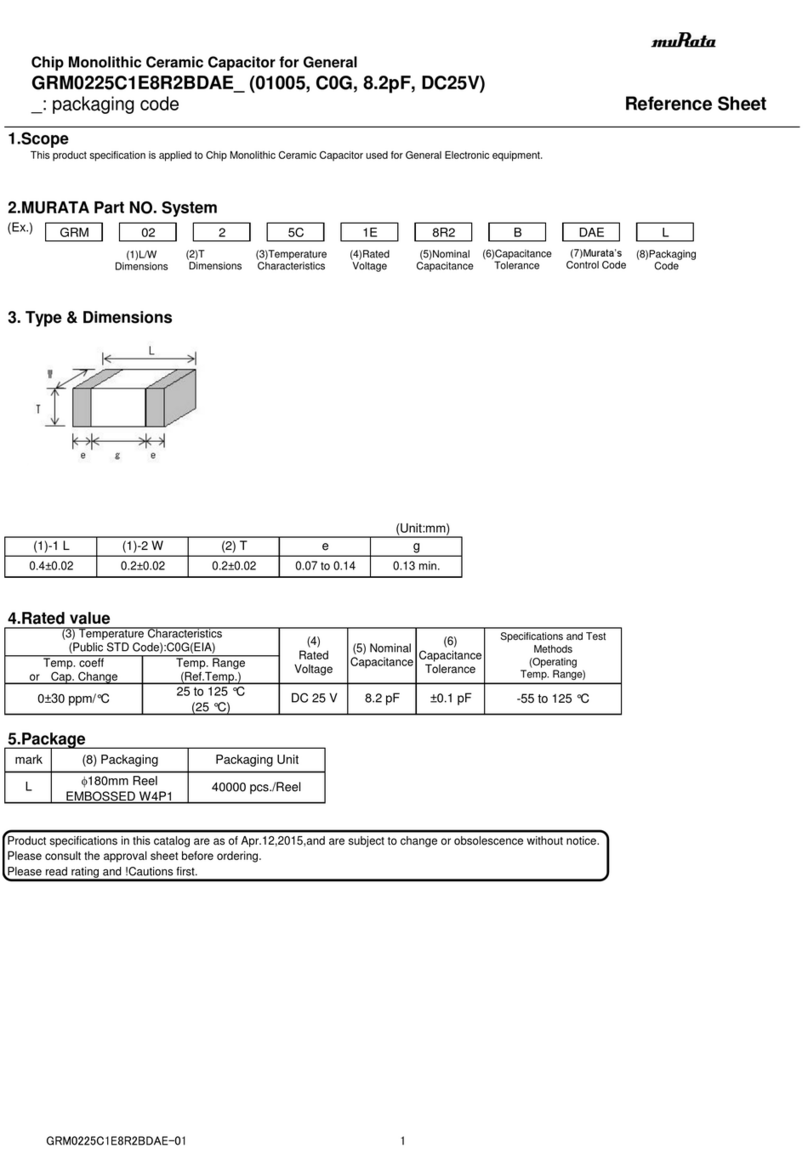
Temperature Range
2 Rated Voltage See the previous pages. The rated voltage is defined as the maximum voltage which may be
applied continuously to the capacitor.
When AC voltage is superimposed on DC voltage, VP-P or VO-P,
whichever is larger, should be maintained within the rated
voltage range.
3 Appearance No defects or abnormalities. Visual inspection.
4 Dimension Within the specified dimensions. Using calipers.
5 Dielectric Strength No defects or abnormalities. No failure shall be observed when 250% of the rated voltage is
applied between the terminations for 1 to 5 seconds, provided the
charge/discharge current is less than 50mA.
6 Insulation
50Ω・F min. The insulation resistance shall be measured with a DC voltage
not exceeding the rated voltage at 25℃and 75%RH max. and
within 1 minutes of charging.
7 Capacitance Within the specified tolerance.
The capacitance/D.F. shall be measured at 25℃at the
frequency and voltage shown in the table.
8 Dissipation Factor 0.120max.
(D.F.)
9 Capacitance The capacitance change shall be measured after 5 min. at
Temperature each specified temperature stage.
Characteristics
The ranges of capacitance change compared with the 25℃value
over the temperature ranges shown in the table shall be within
the specified ranges.
10 Adhesive Strength of No removal of the terminations or other defect Solder the capacitor to the test jig (glass epoxy board) using a
Termination should occur. eutectic solder. Then apply 5N force in parallel with the test
jig for 10±1 sec. The soldering shall be done either with an
iron or using the reflow method and shall be conducted with
care so that the soldering is uniform and free of defects such as
heat shock.
11 Vibration Appearance No defects or abnormalities.
Solder the capacitor to the test jig (glass epoxy board) in the same
Resistance manner and under the same conditions as (10). The capacitor shall
Capacitance Within the specified tolerance. be subjected to a simple harmonic motion having a total amplitude
of 1.5mm, the frequency being varied uniformly between the approximate
D.F. 0.120max.
limits of 10 and 55Hz. The frequency range, from 10 to 55Hz and return
to 10Hz, shall be traversed in approximately 1 minute.
This motion shall be applied for a period of 2 hours in each 3 mutually
perpendicular directions (total of 6 hours).
75% of the terminations is to be soldered evenly
Immerse the capacitor in a solution of ethanol (JIS-K-8101) and
of Termination and continuously. rosin (JIS-K-5902) (25% rosin in weight proportion). Preheat at
80 to 120℃for 10 to 30 seconds. After preheating, immerse in
eutectic solder solution for 2±0.5 seconds at 230±5℃,or
Sn-3.0Ag-0.5Cu solder solution for 2±0.5 seconds at 245±5℃.
■SPECIFICATIONS AND TEST METHODS

